Seed, Soil, Rising: Turning: On Field and Work with Vidya Shivadas
The field, in its complicated expanse, finds no resting place. It is rife with contradictions and tensions between its imminent definitions and eventual destinations. The field is attuned to impermanence, to upheaval and song; in being so, it evades conformity and convention. We are urged to ask: what is the field today, as it turns? What does it present itself as? What names can we offer it, and how does it seek to name itself?
Turning: On Field and Work is curated by Vidya Shivadas, a New Delhi-based curator and director of the Foundation for Indian Contemporary Art (FICA), as part of the 8th edition of the Serendipity Arts Festival in Goa, which opened on 15 December 2023. With a focus on materiality and ways of knowing and inhabiting the world, Turning presents a range of “knowledge positions” situated in and around creative and artistic practices spanning individuals, collectives and rich ideations. With thematic strands focusing on land and community through movements, solidarities and collective struggles, and the archive as both excavation and collation, Turning situates the exhibition site as one drawing on and from the simplicity of rootedness. In this edited interview, Shivadas speaks of her process, her frameworks and impetus, as well as the possibilities of working with the format of the festival.
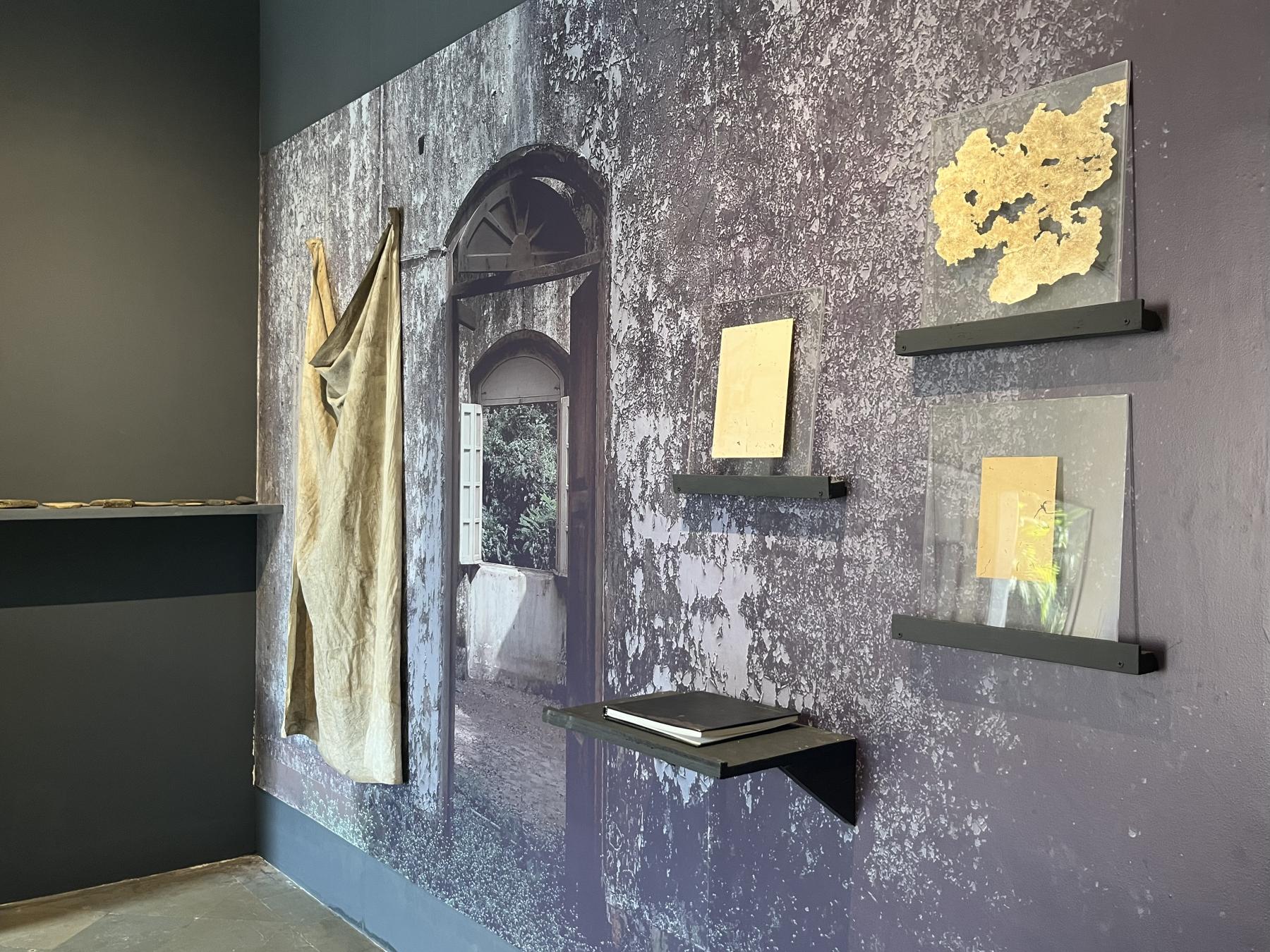
Maksud Ali Mondal, Fragmented Poetry Installation, Mixed media with photo book, moss, termite and silverfish eaten papers, print, dusty, cloth(dusty, stained and fungal) and stones from the flooded river, (2023).
Annalisa Mansukhani (AM): Could you share a bit about the concept and framing for this exhibition? How did this configuration take shape?
Vidya Shivadas (VS): This exhibition is an act of assimilation, bringing together ongoing projects and practices with works that have been exhibited recently. It was a way for me to think about how an exhibition could bring together key urgencies from the present moment in contemporary art, especially the kinds of exhibitions and formats of display that I have had the privilege of seeing. In addition to this, it holds enquiries that are related to processes or projects that one has been more closely involved with via FICA. I was also trying to think around the possibilities of collaborations and exchanges that could occur between practitioners and whether one could use the momentum of the festival to initiate some of those dialogues.
The concept behind Turning draws from the idea of the turn present in critical discourse for a while now. Irit Rogoff's key text on turning looks at the relationship between art and education. In it, Rogoff raises a critical point about whether the turn in itself is producing new ground, whether it is not just one system being read through another, but the fact that something new is emerging—something born of this coming together. Hal Foster spoke, somewhat critically, about the ethnographic turn in the field more than a decade ago and that also becomes interesting to revisit in terms of questions of collaboration, representation and agency. And finally, there is Tim Ingold’s take on turning the soil, which is also very illuminating because it addresses the question of writing the field, bringing to light questions of the kind of discursive realms of the practices that we are seeing unfold around us. How might these be interwoven with the idea of reading or writing (from) the field itself? These were the key ideas that somewhere feed into the way this exhibition takes shape.
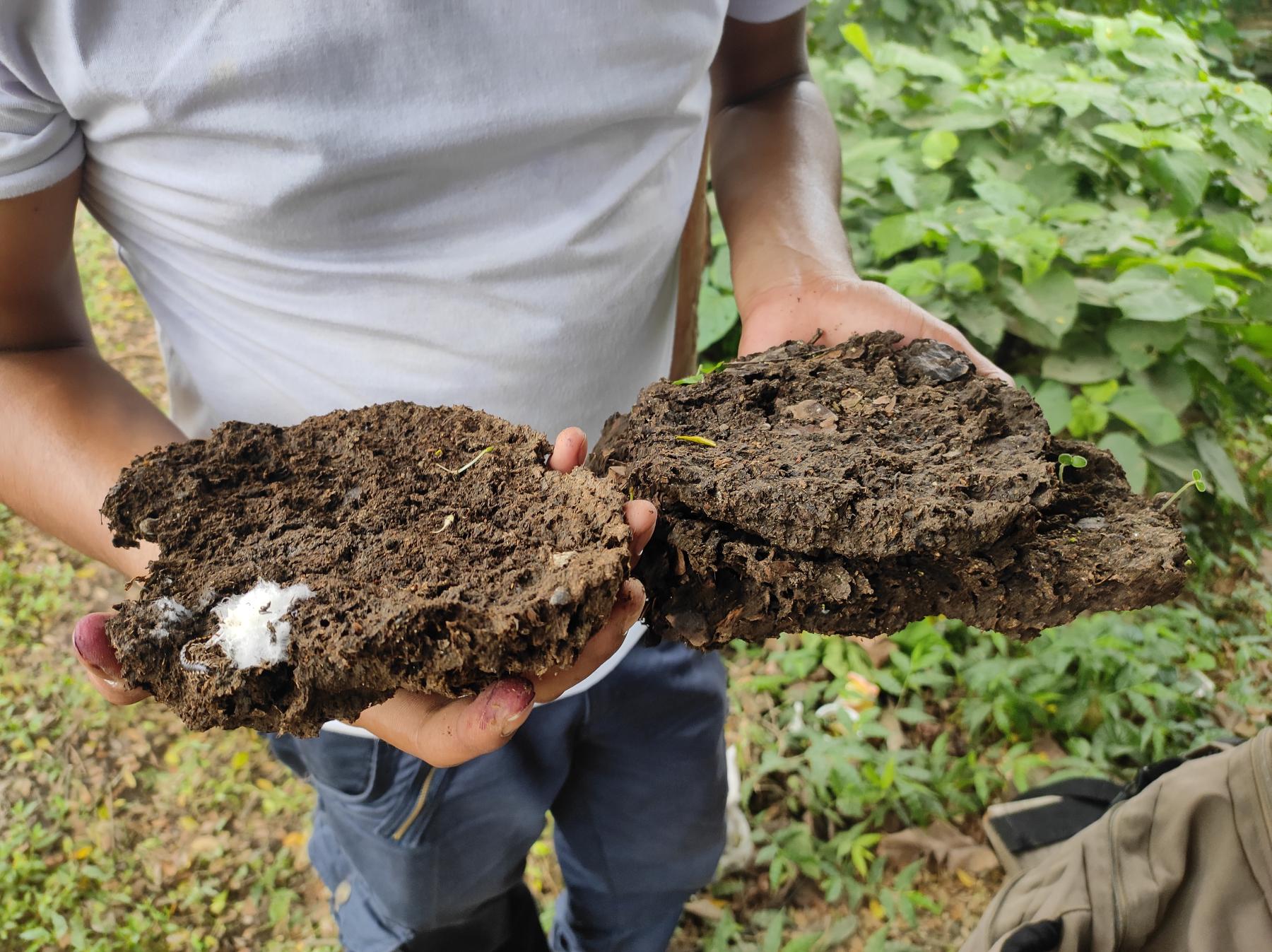
Project in Progress by Panjeri Artists’ Union titled Loose Stitches and Lived Armoires: Vestiges of Fractured Life around Jessore Road (Mixed media Installation, 2023).
Ingold talks about how one might think about writing time; how writing on paper is different from writing on soil. When we work with the ground, we are not thinking in terms of layers or separation, we are thinking of a kind of a journeying—a turning—which is how the ground, how the field works. What shape does this kind of writing take? How does one read the field when we are thinking of entanglements? As Ingold writes evocatively, “In the rising earth and the falling sky, in that intermediate zone, that's where life is found.”
AM: Could you tell us about some of the works and the enquiries they present towards notions of turning and the field?
VS: With Turning, we are looking at artists working on the ground, coming from formations such as the AgriForum, a reading group that FICA developed of artists working with the agrarian in 2020. We are also looking at works forming certain conversations: for example, works by Benitha Perciyal and Khandakar Ohida converge around the trope of the museum and the library. Perciyal’s sculptural installation unpacks colonial knowledge production and classification, highlighting book titles from eighteenth century onwards. Khandakar’s installation counters the imperial or nationalist imagination associated with museums and instead holds up a compulsive collection made by an individual living in a small village in West Bengal. Through this exhibition, I am thinking of how these strands coalesce and how both of these practices, for instance, form in relation to each other.
As I think of form, I am also extending this thought to formation. Turning also goes into a material exploration, digging around small reflective notes and writings that come from looking at the question of landscape. Sanchayan Ghosh’s work runs as a spine through the site, where he looks at how the contextual modernism of Santiniketan was fostered. His archive opens up with the site of the Old Goa Medical College (GMC), and we see this take up space as it thinks about acts of building, through landscape and architecture, highlighting the pertinent question of labour made evident via the lives of roof tile makers.
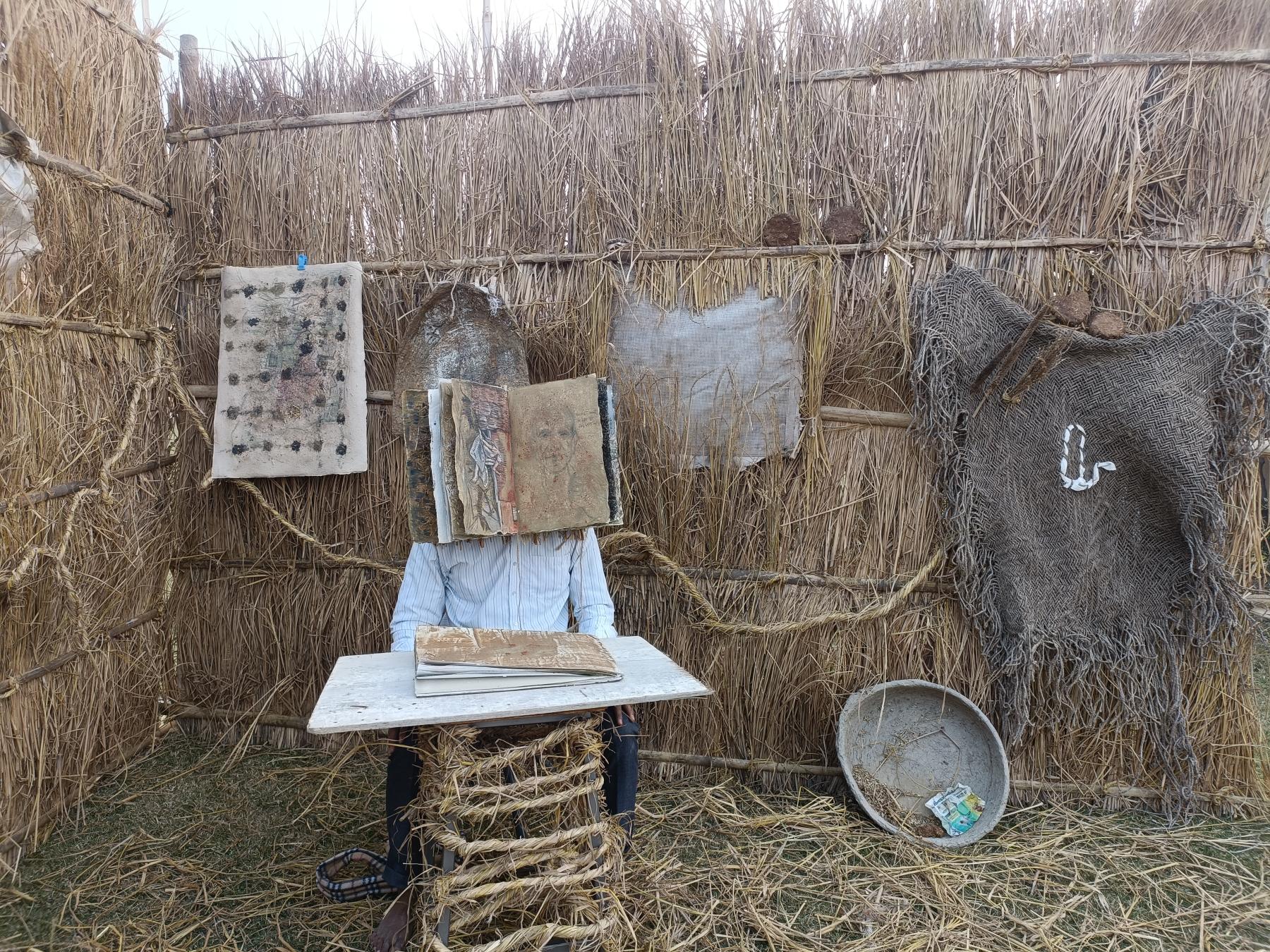
Gyanwant Yadav’s mixed media book titled Mask Making Rendezvous in the Village (2022).
Formations are evident in the conversations between filmmakers Chalam Bennurkar and Babu Eshwar Prasad, South African artist and cultural worker Rangoato Hlasane and the Madhya Pradesh-based collective Gram Art Project, North East Lightbox and Tahireh Lal—there are some who have recently developed an evolving familiarity with each other, and there are others whose collaborative formations and exchanges go back several years. Turning is also host to the first project that the Panjeri Artists’ Union has done together, producing and remembering the experience of living on Jessore Road, a site with its own long and weighted history of migration and belonging. It also curatorially places in conversation the works of Niroj Satpathy and Amol K. Patil, which parallel each other in their ways of reading the city, its turbulences and its disintegrations. Somewhere, the exhibition becomes a large library of forms, formations and processes, linking people across borders and across notions of the self.
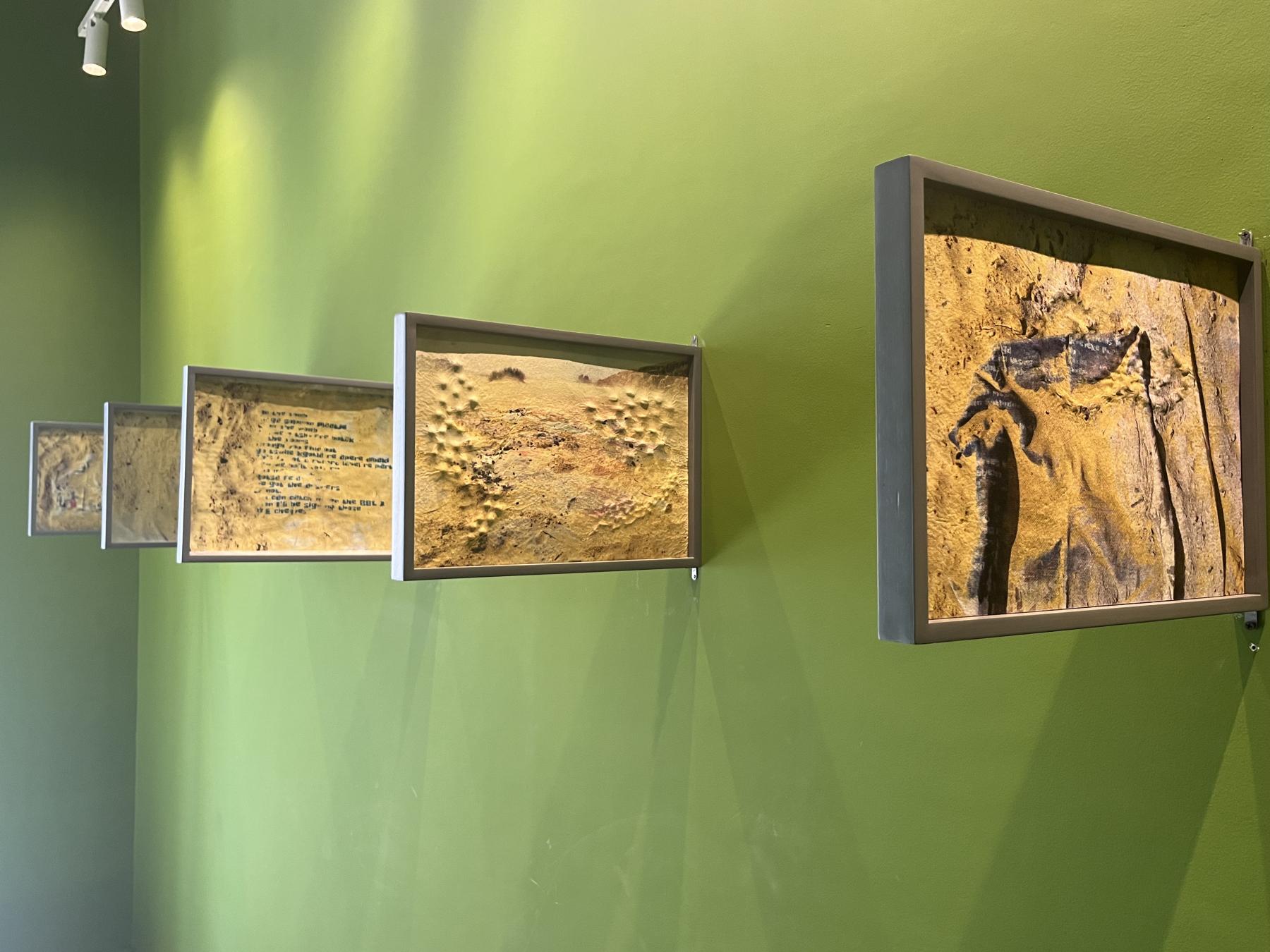
Rangoato Hlasane and Gram Art Project, Tilling the Mountains. Mining the Farmlands. An exchange between Johanesburg and Paradinga Four colour silkscreen prints on sisal hand-made paper, printed at Flood House Johannesburg / Handmade papers made from crop residue, processed at Gram Art Studio, (2023).
AM: How do some of these works respond to the specificity of the site and the festival itself via their material or medium-led explorations and forms?
VS: The festival and the engagement that it facilitates occupies a brief temporality. However, Serendipity is constituted of the festival, which becomes one aspect—but there is also the aspect of grant-giving and support that places an emphasis on building experimental practices. Over and above, it facilitates a gathering—of art, people, work, ideas and practices—where objects, stories and assemblages come together. The Old GMC is a very beautiful site with a long and rich history. As a medical college and hospital, it has a lot of rooms that offer up a lot of inspiration in terms of curatorial navigation. These are not fractured spaces; instead, the rooms and the corridors bring in their own fluidities, adding to these conversations and to how the progression of the exhibition has taken shape. With projects initiated by the Panjeri Artists’ Union and Ghosh, the corridor becomes a simulation of a lot of the themes that they address. It becomes a road, a laboratory, a blueprint, a fragment—a threshold for new imaginations around material and site. With Satpathy, Patil and Ambedkar Age Digital Bookmobile, the corridors and interstices become transitions as they extend continuities between the works, between processes of making and between fertile practices keen to spotlight and engage with the urgencies of the present. Overall, the site is something that is responded to both contextually and spatially; the works and the dialogues they seek to initiate are vibrant in the way that they unfold in the space.
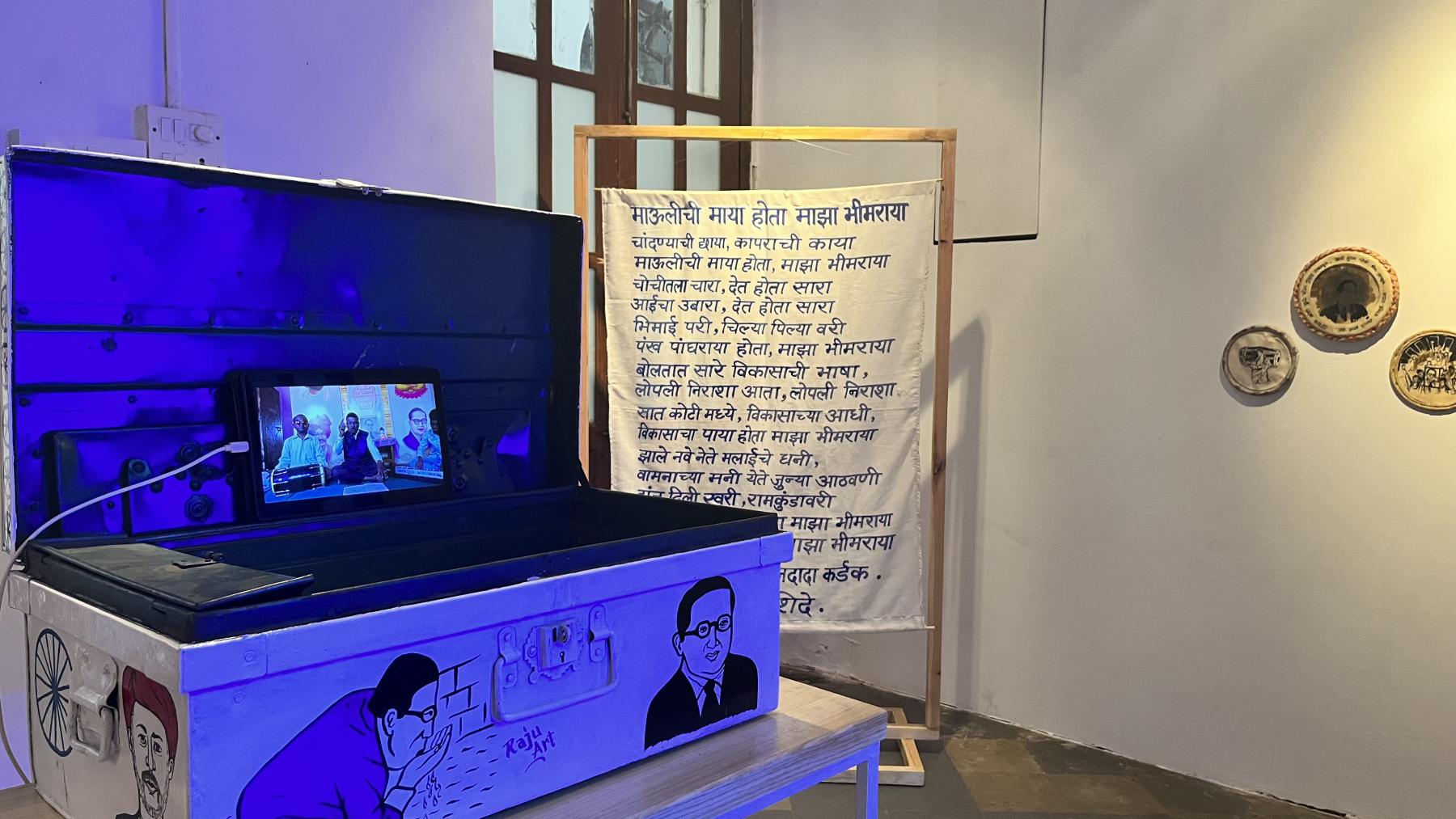
Smita Rajmane and Somnath Waghmare, The Ambedkar Age Digital Bookmobile, Portable multi-media archive of songs by anti-caste singers from Maharashtra, (2020 - ongoing)
AM: Your role as a curator for this exhibition has also been a nodal one, wherein you have been working to facilitate these conversations and writing between people, the site and the works, and between contexts. As someone who is keenly tuned into initiating and fostering new and different gatherings, what has been your curatorial takeaway?
VS: I am interested in viewing the exhibition as a way to assimilate and bring together ideas, people and activities that can activate a reading of the present moment. There are people in this exhibition that have been part of various initiatives by FICA, people we have developed different forums with, and with whom I now look forward to being in conversation for the future.
For me, Turning has been a way to think with three strands: accumulations, archives and new risings. It has been a way to look at alternate routes and entry points. The exhibition site itself can be entered in more than one way—it configures and reconfigures with each encounter. There are overlays within these strands, invoked by the different material explorations—none of which are watertight, all of which are deeply in dialogue with each other.
Readings on and around the field tie together so much of what we do; these are questions and instigations that persist, especially with the AgriForum and the agrarian field, but also with notions of the artistic field, the field of research and the field of practice. Curatorially, this exhibition is a build-up of several ideas, giving us an opportunity to see it as a larger conversation and a concentration that yields so much more—to audiences, to participants and hopefully also to its own afterlives.
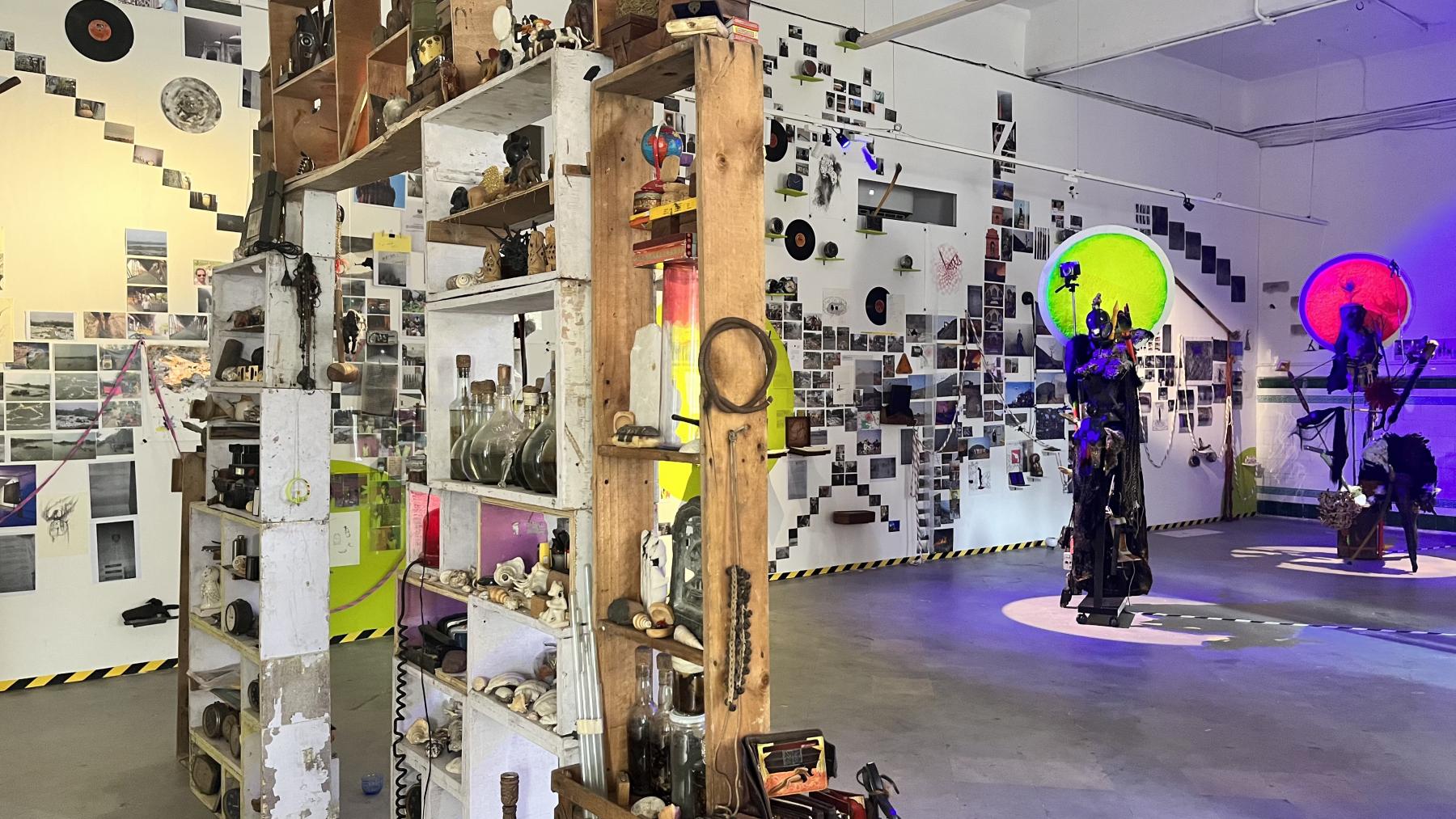
Niroj Sathpathy, Dhalav, Installation with found objects from various dumping sites all over Delhi, (2014 - 2023).
To learn more about Vidya Shivadas’ work, revisit the ASAP podcast episode in which she speaks with Jyotsna Nambiar about the role of art education.
To learn more about previous editions of the Serendipity Arts Festival, revisit a conversation with Smriti Rajgarhia, Director of the Serendipity Arts Foundation and ASAP | art’s special coverage of the previous edition of the festival featuring the work of Sridhar Balasubramaniyam, Uppu Collective, Supriya Dongre and the Goa Familia Project.




